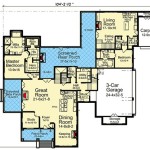Home Health Plan of Care: A Comprehensive Guide
A Home Health Plan of Care, often referred to simply as a "care plan," is a detailed, written document that outlines the specific healthcare services a patient will receive in their home. It serves as a roadmap for all involved parties, including the physician, home health agency, nurses, therapists, home health aides, and the patient and their family. Its purpose is to ensure coordinated, consistent, and high-quality care that addresses the patient's individual needs and goals.
The development and execution of a Home Health Plan of Care are governed by regulations and guidelines established by Medicare, Medicaid, and other healthcare payers. Compliance with these standards is crucial for reimbursement and ensuring the safety and well-being of the patient. A well-constructed care plan not only facilitates effective communication among the care team but also empowers the patient to actively participate in their own recovery and management of their health conditions.
The care plan is not a static document; it is regularly reviewed and updated to reflect changes in the patient's condition, progress towards goals, and any adjustments needed in the care provided. This dynamic approach ensures that the care remains relevant and effective throughout the duration of home health services.
Key Components of a Home Health Plan of Care
A comprehensive Home Health Plan of Care typically includes several key components, each designed to address specific aspects of the patient's healthcare needs. Understanding these components is vital for both healthcare professionals and patients to ensure that the plan effectively guides the delivery of care.
The first key element is the Patient Information and Demographics. This section includes the patient's name, address, date of birth, contact information, emergency contacts, insurance details, and medical history. Accurate and up-to-date information is essential for proper identification and communication.
Next, the plan outlines the Physician Orders. Home health services are always provided under the direction of a physician, who must sign and approve the care plan. The physician's orders specify the types of services required, the frequency and duration of visits, and any specific instructions for the care team. These orders are the foundation upon which the entire care plan is built.
The Nursing Assessment is another vital component. A registered nurse conducts a thorough assessment of the patient's physical, emotional, and social needs. This assessment includes a review of the patient's medical history, current medications, vital signs, functional abilities, cognitive status, and any existing medical conditions. The nursing assessment helps to identify the patient's specific needs and develop appropriate interventions.
Therapy Assessments are also included, if applicable. If the patient requires physical therapy, occupational therapy, or speech therapy, a licensed therapist will conduct an assessment to evaluate the patient's functional limitations and develop a plan to improve their mobility, strength, coordination, and communication skills. The therapist's assessment will outline specific exercises, activities, and techniques to be used during therapy sessions.
The Medication List is a critical section that details all of the patient's current medications, including the name of the medication, dosage, frequency, route of administration, and the prescribing physician. This list helps to ensure that the patient is taking their medications correctly and to prevent medication errors or adverse drug interactions.
The Care Plan Goals are specific, measurable, achievable, relevant, and time-bound (SMART) objectives that the patient and the care team are working to achieve. These goals should be individualized to the patient's needs and priorities. Examples of care plan goals include improving mobility, managing pain, preventing falls, and educating the patient and family about their medical condition.
The Specific Interventions are the actions and strategies that the care team will use to help the patient achieve their goals. These interventions may include medication management, wound care, physical therapy exercises, occupational therapy activities, speech therapy techniques, patient education, and emotional support. The interventions should be evidence-based and tailored to the patient's individual needs.
The Frequency and Duration of Visits specify how often and for how long each member of the care team will visit the patient's home. This schedule is based on the patient's needs and the physician's orders. The frequency and duration of visits may be adjusted as the patient's condition changes.
Finally, the Discharge Plan outlines the steps that will be taken to help the patient transition out of home health services. This plan may include referrals to other healthcare providers, recommendations for ongoing care, and instructions for self-management. The discharge plan ensures a smooth and safe transition for the patient.
The Importance of Patient and Family Involvement
The Home Health Plan of Care is most effective when the patient and their family members are actively involved in its development and implementation. Their input is crucial for ensuring that the plan reflects their individual needs, preferences, and goals. Active participation promotes a sense of ownership and empowers the patient to take control of their healthcare journey.
Patients and families should be encouraged to ask questions, express concerns, and provide feedback on the care plan. They should also be involved in setting the goals and determining the specific interventions that will be used. This collaborative approach ensures that the care is patient-centered and aligned with their values.
Furthermore, patients and families play a vital role in monitoring the patient's condition and reporting any changes or concerns to the care team. They are often the first to notice subtle changes in the patient's physical, emotional, or cognitive status. Prompt reporting of these changes allows the care team to adjust the plan of care as needed.
Education is another essential aspect of patient and family involvement. The care team should provide clear and concise information about the patient's medical condition, medications, and treatment plan. They should also teach the patient and family how to perform necessary tasks, such as administering medications, changing dressings, and using assistive devices. Adequate education empowers the patient and family to manage their care effectively and prevent complications.
Ultimately, the Home Health Plan of Care is a partnership between the healthcare professionals, the patient, and their family. When all parties work together collaboratively, the patient is more likely to achieve their goals and improve their overall health and well-being.
Challenges in Implementing and Maintaining a Home Health Plan of Care
While the Home Health Plan of Care is a valuable tool for delivering coordinated and effective care, there are several challenges that can arise in its implementation and maintenance. Recognizing these challenges and developing strategies to address them is crucial for ensuring the success of home health services.
One common challenge is Communication Barriers. Effective communication is essential for ensuring that all members of the care team are aware of the patient's needs and goals. However, communication can be hindered by factors such as language barriers, cultural differences, cognitive impairments, and lack of access to technology. Overcoming these barriers requires the use of clear and concise language, culturally sensitive communication techniques, and assistive communication devices.
Coordination of Care can also be a significant challenge. The Home Health Plan of Care often involves multiple healthcare professionals, including nurses, therapists, home health aides, and physicians. Coordinating the schedules and activities of these individuals can be complex and time-consuming. Effective care coordination requires clear lines of communication, well-defined roles and responsibilities, and the use of technology to facilitate information sharing.
Adherence to the Care Plan is another critical challenge. Patients may not always follow the recommendations outlined in the care plan due to factors such as lack of understanding, financial constraints, or personal preferences. Improving adherence requires patient education, motivational interviewing, and addressing any barriers that may be preventing the patient from following the plan.
Changes in the Patient's Condition can also pose a challenge. The Home Health Plan of Care should be regularly reviewed and updated to reflect changes in the patient's physical, emotional, or cognitive status. Failure to adjust the plan in a timely manner can lead to suboptimal care and potentially adverse outcomes. Regular monitoring of the patient's condition and prompt communication of any changes to the care team are essential.
Documentation and Record Keeping is also an important aspect of maintaining the Care Plan. Accurate and thorough documentation is essential for demonstrating that the care provided meets the requirements of Medicare, Medicaid, and other healthcare payers. However, documentation can be time-consuming and burdensome for healthcare professionals. Streamlining documentation processes and utilizing electronic health records can help to improve efficiency and accuracy.
Finally, Resource Constraints can limit the effectiveness of the Home Health Plan of Care. Home health agencies may face challenges in accessing adequate funding, staffing, and equipment. These constraints can make it difficult to provide the level of care that is needed. Advocating for adequate resources and utilizing cost-effective strategies are essential for addressing these challenges.
Addressing these challenges requires a proactive and collaborative approach. By fostering open communication, coordinating care effectively, promoting patient adherence, monitoring the patient's condition closely, maintaining accurate documentation, and advocating for adequate resources, home health agencies can overcome these obstacles and deliver high-quality care that improves the lives of their patients.

Home Health Care Plan Template

Home Health Certification And Plan Of Care Billing 101 Healthrev Partners

Home Health Care Plan Template

Aide Care Plan Help Center

Welcome

Home Health Certification And Plan Of Care Billing 101 Healthrev Partners

Home Health Solution Update Help Center

Welcome

Free Printable Home Health Care Chart

485 Home Health Certification And Plan Of Treatment
See Also








